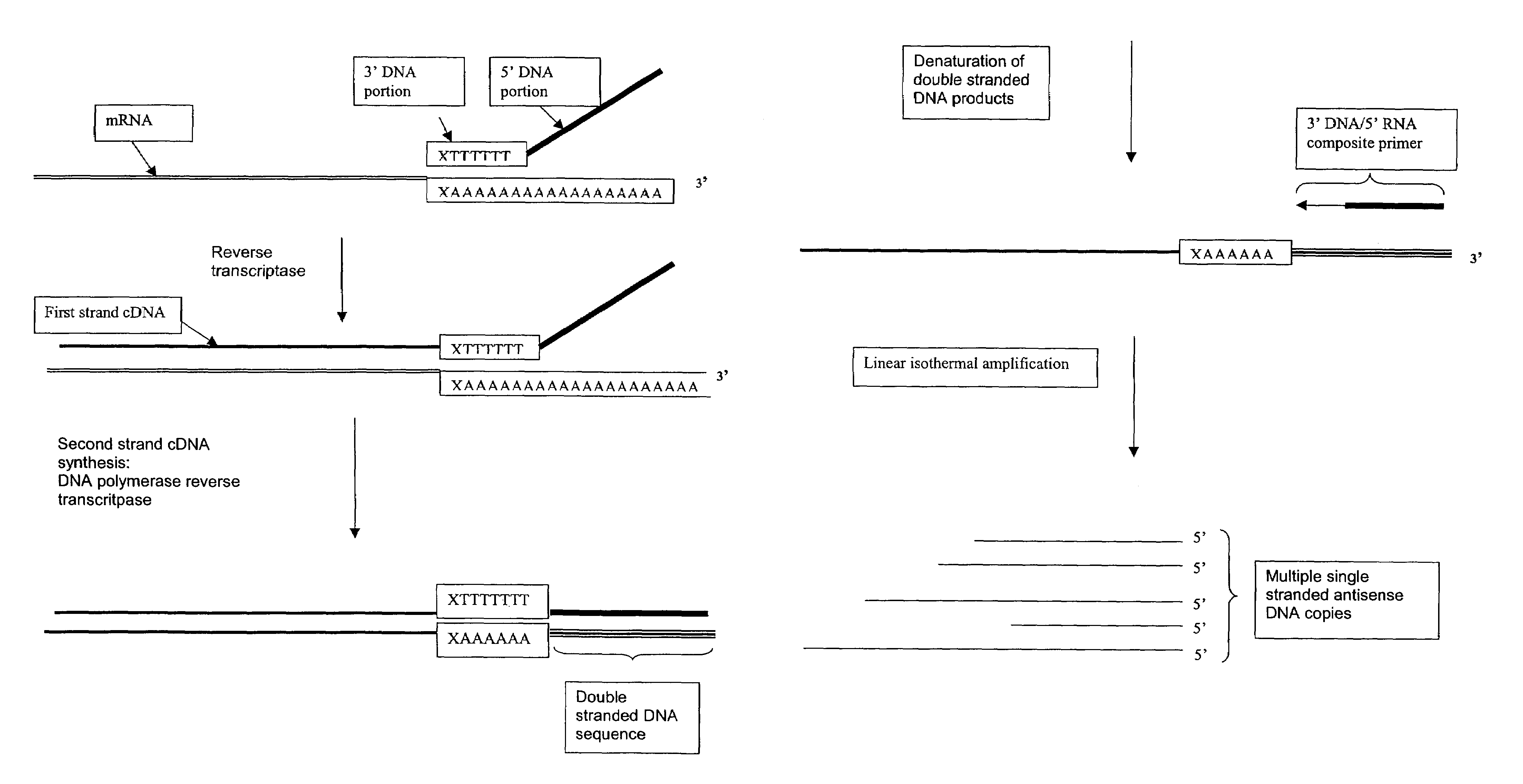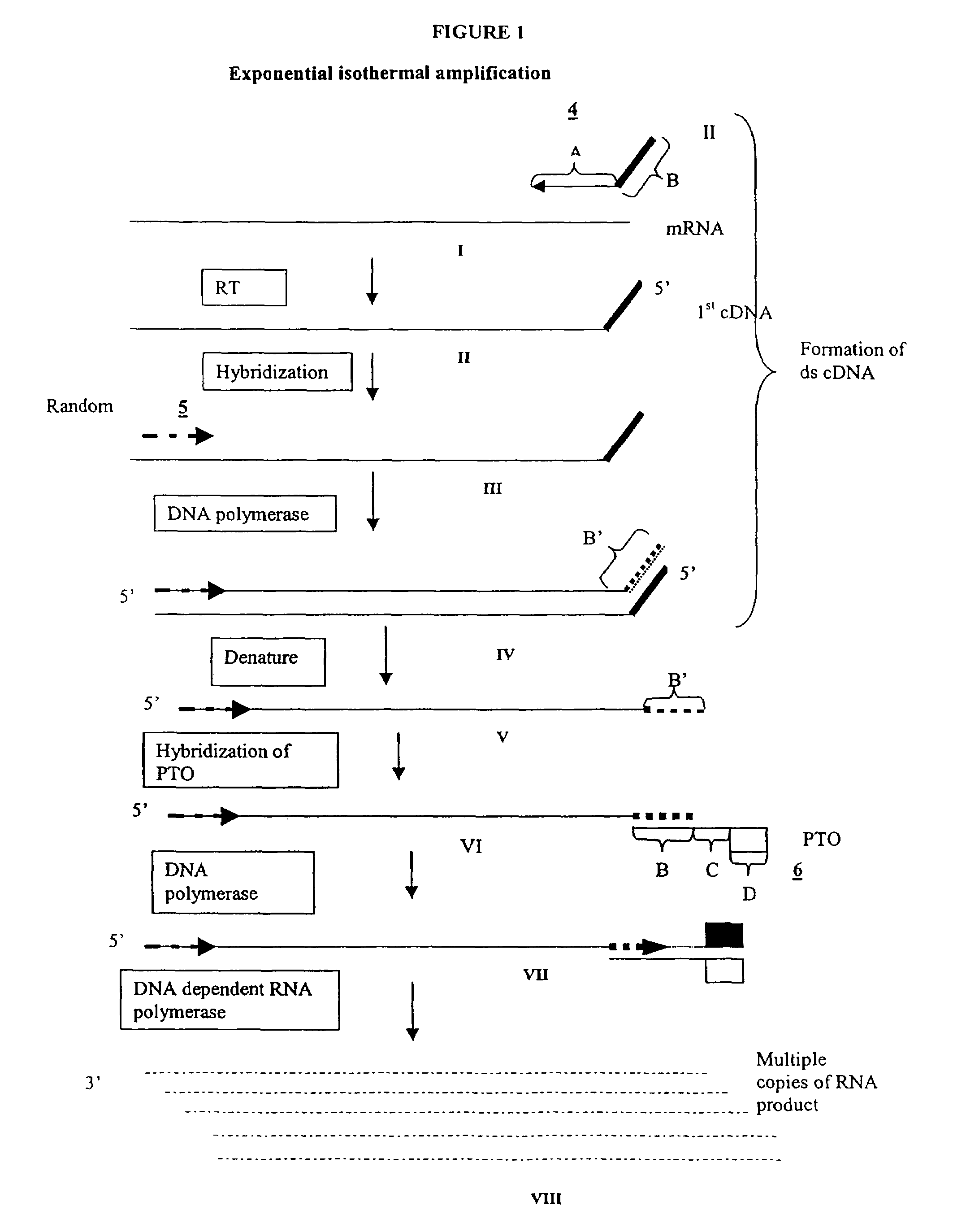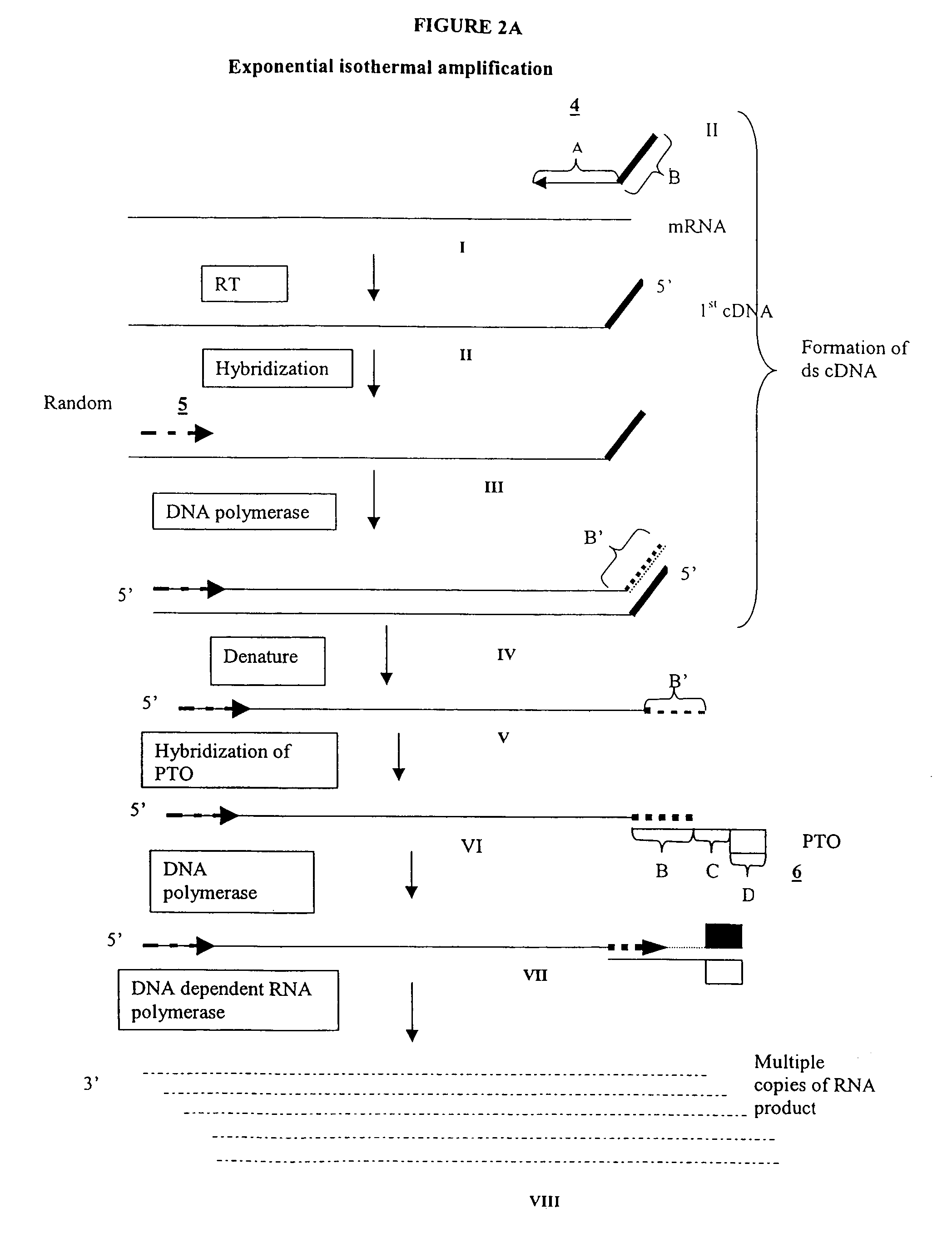Amplification of RNA sequences using composite RNA-DNA primers and strand displacement
a technology of rna sequences and dna primers, applied in the field of polynucleotide amplification, can solve the problems of prone to generate pools of products which do not, large amount of starting mrna, and limited sample mrna availabl
- Summary
- Abstract
- Description
- Claims
- Application Information
AI Technical Summary
Benefits of technology
Problems solved by technology
Method used
Image
Examples
example 1
Amplification of Total mRNA
[0264]0.1 μg of total mRNA is combined with primer 1 (provided at a concentration of from 0.1 to 1 μM), PTO oligonucleotide (provided at a concentration of from 0.1 to 1 μM), primer 2 (provided at a concentration of from 0.1 to 1 μM) in a total volume of about 10 μl in a buffer containing 40 mM Tris, pH 8.5, 5 mM DTT, 12 mM MgCl2, 70 mM KCl, 108.8 μg / ml BSA; 1 mM of each dNTP, 2 mM each of rATP, rUTP, rCTP, 1.5 mM rGTP, and 0.5 mM rITP). The mixture is incubated at 65° C. for 2 minutes, and cooled down to 37° C. (or 42° C.). 10 μl of an enzyme mixture containing T7 RNA polymerase (40 to 80 U), MMLV reverse transcriptase (10 to 30 U), and RNase H (1 to 3 U), is added to the reaction mixture, and the mixture is further incubated for 0.5 to 3 hours.
[0265]Aliquots of the reaction mixture are analyzed by gel electrophoresis (5 to 20% PAGE, Novex) for generation of amplification products.
Primer 1 Sequence:
[0266]GACGGATGCGGTCTTTTTTTTN[0267]“N” denotes a degenerat...
example 2
Amplification of Specific mRNA
[0272]The experiment of Example 1 is performed, except that primer 2 is substituted with a primer specific for a sequence of a defined mRNA species to be amplified. For example, the amplification of a sequence of GAPDH mRNA is carried out with a primer that hybridizes to a site on the first cDNA strand (first primer extension product) generated from GAPDH mRNA.
[0273]Although the foregoing invention has been described in some detail by way of illustration and example for purposes of clarity of understanding, it will be apparent to those skilled in the art that certain changes and modifications may be practiced. Therefore, the descriptions and examples should not be construed as limiting the scope of the invention, which is delineated by the appended claims.
PUM
 Login to View More
Login to View More Abstract
Description
Claims
Application Information
 Login to View More
Login to View More - R&D
- Intellectual Property
- Life Sciences
- Materials
- Tech Scout
- Unparalleled Data Quality
- Higher Quality Content
- 60% Fewer Hallucinations
Browse by: Latest US Patents, China's latest patents, Technical Efficacy Thesaurus, Application Domain, Technology Topic, Popular Technical Reports.
© 2025 PatSnap. All rights reserved.Legal|Privacy policy|Modern Slavery Act Transparency Statement|Sitemap|About US| Contact US: help@patsnap.com



